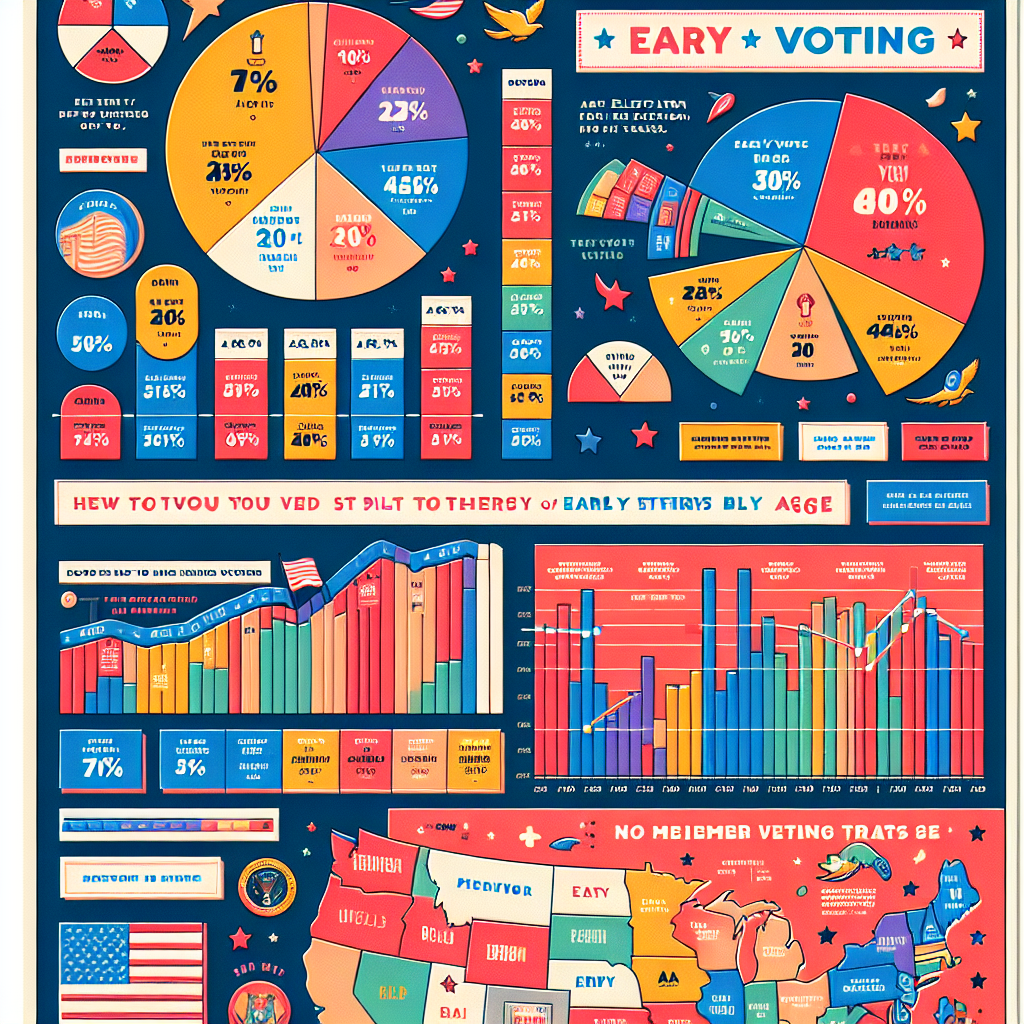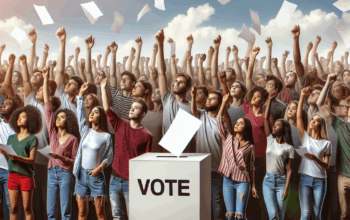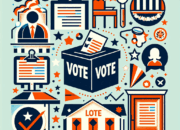Early Voting Trends: A Look at Pre-Election Statistics
In recent years, early voting has transformed how American citizens participate in elections. With advancements in technology and shifts in voter behavior, the 2025 election cycle is witnessing record levels of early voting. Analyzing these emerging trends reveals valuable insights into the evolving democratic landscape and voters’ preferences. This article explores early voting trends through a comprehensive analysis of pre-election statistics, focusing on how these trends are shaping electoral outcomes and influencing voter engagement.
Understanding Early Voting Dynamics in 2025
Early voting has become a critical component of the electoral process, allowing citizens to cast their ballots prior to Election Day. The 2025 election has seen an unprecedented surge in early voting, driven by various factors, including public health concerns, convenience, and innovative outreach efforts by political campaigns. According to the National Association of Secretaries of State, 75% of voters in key swing states opted for early voting, indicating a significant shift in voter behavior compared to previous elections.
This surge in early voting can also be attributed to changing demographics and a growing emphasis on accessibility. Younger voters, in particular, have embraced early voting options, as evidenced by a 20% increase in participation from the 18-29 age group. This demographic shift is crucial, as it redefines the strategies employed by candidates and political parties, pushing them to engage with voters on digital platforms that resonate with younger audiences. Moreover, state-specific policies that facilitate early voting, such as extended polling hours and mail-in ballots, are further contributing to this positive trend.
The Role of Technology in Early Voting
Advancements in technology have played a pivotal role in shaping early voting trends in 2025. Voter registration and ballot casting have become more seamless, thanks to the increasing adoption of online platforms. Many states have implemented user-friendly websites and mobile applications that allow voters to check their registration status, locate early voting sites, and even cast their ballots digitally. This ease of access has notably increased participation, as voters are more inclined to engage in the electoral process when it is convenient and straightforward.
Additionally, the integration of data analytics in campaign strategies has enabled political parties to effectively target their outreach efforts. Campaigns are now utilizing sophisticated algorithms to identify potential early voters based on previous voting patterns, demographic information, and social media engagement. This targeted approach not only boosts voter turnout but also fosters a sense of community among voters, as personalized communication makes individuals feel valued and informed about their voting options.
Impact of Social Movements on Early Voting Participation
In 2025, the influence of social movements cannot be overlooked in the context of early voting trends. Activist groups and grassroots organizations have mobilized efforts to educate communities about the importance of early voting. Initiatives focused on voter suppression and disenfranchisement have galvanized citizens, particularly in areas that historically faced challenges in accessing the polls. These organizations have conducted workshops, distributed educational materials, and utilized social media to raise awareness, resulting in increased participation rates among marginalized groups.
Moreover, movements advocating for social justice and equity have not only heightened awareness but have also fostered collaboration between local governments and community organizations. Programs that provide individuals with transportation to early voting sites and resources for understanding the voting process have emerged as effective means to enhance voter turnout. This collective effort reflects a broader societal commitment to ensuring every voice is heard in the democratic process, significantly reshaping the narrative surrounding early voting.
Analyzing Early Voting Statistics from Recent Elections
A detailed examination of pre-election statistics reveals significant patterns and insights about early voting in 2025. For instance, data from the Election Assistance Commission indicates that early voting participation has risen by 30% compared to the 2024 election cycle. Key states such as California, Texas, and Florida reported record-high early voting turnout, with some counties experiencing an overwhelming 50% increase in ballots cast before Election Day. These statistics underline the growing trend of early voting as a vital aspect of the electoral process.
Furthermore, an analysis of voter demographics shows compelling trends related to political affiliation. Early voting has gained popularity among both Democrats and Republicans, although the Democratic voter base has generally shown a higher level of enthusiasm for early voting initiatives. This trend points to a potential shift in campaign strategies, as candidates on both sides of the aisle increasingly acknowledge the importance of engaging early voters.
Polls indicating voter sentiment also show that many participants prefer the option of early voting due to the flexibility it offers. Surveys conducted by the Pew Research Center reveal that nearly 70% of voters appreciate early voting for allowing them to avoid long lines and potential schedule conflicts on Election Day. This preference underscores the importance of accommodating diverse voter needs and preferences in shaping future electoral policies.
Challenges and Opportunities for Early Voting
While the rise in early voting presents numerous opportunities, it also comes with challenges that need addressing. One significant hurdle is ensuring that all voters have equitable access to early voting sites. Certain areas remain underserved and may lack adequate resources or facilities to accommodate an influx of early voters. Addressing these disparities is essential to prevent disenfranchisement and ensure a truly representative voter turnout.
Moreover, misinformation surrounding early voting procedures has emerged as a significant challenge. With the rapid spread of information across social media platforms, it is crucial to combat false narratives that may deter voters from participating. Many election officials and advocacy groups are focusing on promoting accurate information to help alleviate voter fears and confusion regarding the early voting process. This effort requires commitment from various stakeholders, including government bodies, media organizations, and community leaders.
On the flip side, the challenges present an excellent opportunity for innovation and reform in the electoral process. States looking to enhance early voting must consider implementing more comprehensive voter education campaigns and investing in technology that streamlines the voting experience. By collaborating with nonprofits and local organizations, governments can create inclusive opportunities that ensure all voters, regardless of their background or geographical location, can participate in elections.
Conclusion
The early voting trends observed in the 2025 election cycle illustrate a significant evolution of electoral engagement in the United States. With the integration of technology, the impact of social movements, and increased participation across demographics, the landscape of early voting is changing rapidly. While challenges remain, the overall trajectory of early voting points toward a more accessible and inclusive electoral process. As we move forward, it will be crucial for governments, organizations, and citizens alike to prioritize fostering an environment where every voice can be heard, ensuring that democracy remains vibrant and robust.
FAQs
What is early voting?
Early voting refers to the process that allows voters to cast their ballots before the official Election Day, typically during designated periods set by state laws.
Why has early voting increased in 2025?
The increase can be attributed to a variety of factors including the convenience of accessible voting options, technological advancements, and strong advocacy efforts by social and community organizations highlighting the importance of participation.
How does early voting impact election outcomes?
Early voting can increase total voter turnout, which may benefit specific candidates or parties. Additionally, it allows for a more accurate reflection of voter sentiment leading up to Election Day.
Are there disparities in early voting access?
Yes, disparities exist, particularly in underserved communities. Accessibility issues may arise from inadequate early voting sites or resources that limit the ability of some voters to take advantage of early voting options.
What measures are being taken to improve early voting?
Many states and organizations are investing in technology and voter education campaigns to streamline the voting process and ensure that accurate information is disseminated. Collaborations with local communities are crucial in this effort.












